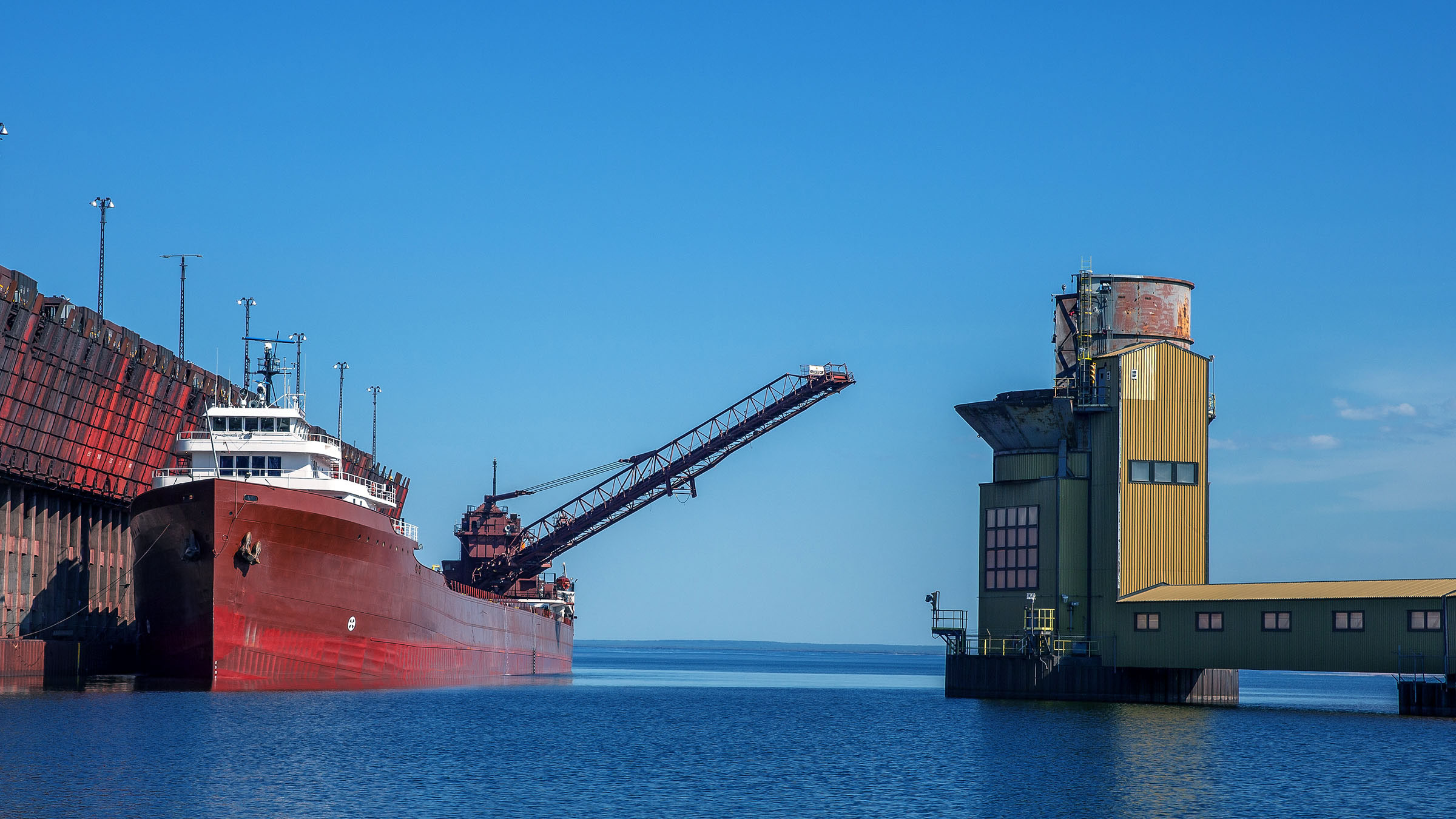Executive Summary
The decline of the heavy manufacturing industry in the American “Rust Belt” is often thought to have begun in the late 1970s, when the United States suffered a significant recession. But theory suggests, and data support, that the Rust Belt’s decline started in the 1950s when the region’s dominant industries faced virtually no product or labor competition and therefore had little incentive to innovate or become more productive.
As foreign imports increased and manufacturing shifted to the American South, the Rust Belt’s share of manufacturing jobs and total jobs declined dramatically. Eventually the region’s manufacturers began to innovate, resulting in a stabilization of employment share at a significantly lower level. Our model suggests that this factor—lack of competitive pressure—accounts for about two-thirds of the Rust Belt’s decline in employment share.
These results imply that vigorous competitive pressure in both product and labor markets is important for creating the incentives for firms to continuously innovate, create and grow, and that government policy should encourage such competition.
It’s commonly believed that the American “Rust Belt”—the heavy manufacturing region primarily bordering the Great Lakes—began to decline economically during the severe recessions of the late 1970s and early 1980s, and continued to decline as U.S. manufacturing struggled after that (see, for example, Dictionary of American History 2003). But this view is misleading and belies an important reason the Rust Belt declined so much and has never fully recovered.
The fall of the Rust Belt extends back to the 1950s, when Rust Belt firms such as General Motors and U.S. Steel dominated their industries and were among the biggest, most profitable businesses in the world. The Rust Belt was an economic giant at that time, accounting for more than half of all U.S. manufacturing jobs in 1950 and about 43 percent of all U.S. jobs. But after 1950, the Rust Belt began a long downturn.
Figure 1 shows that the Rust Belt’s share of economywide jobs declined by about 28 percent between 1950 and 1980 and that its share of manufacturing jobs fell by roughly 34 percent. This indicates that the Rust Belt’s slump started much earlier than commonly believed. Moreover, the fact that its share of U.S. manufacturing jobs fell so much demonstrates that the Rust Belt’s fate was not simply part of the general decline in U.S. manufacturing. The Belt’s downturn was uniquely deep and long-lived. Indeed, since 1950, no region of the United States fared worse economically than the Rust Belt.
This historical pattern also suggests that whatever depressed this region for decades eventually moderated sufficiently such that the Rust Belt’s employment share stabilized after 1985, but at a much lower level. In “Competitive Pressure and the Rust Belt: A Macroeconomic Analysis” (2014), Simeon Alder, David Lagakos and I analyze how lack of competitive pressure in product and labor markets in Rust Belt industries contributed both to the Rust Belt’s decline and to its ultimate stabilization.
We focus on competition for two reasons. First, recent theories of industry growth argue that lack of competitive pressure leads to low levels of industry innovation, productivity growth and industry growth. This follows from the idea that industries not faced with vigorous competition can maintain their market leadership without needing to pursue costly innovations, leading to stagnation in production.
The second reason is that competitive pressure in Rust Belt product and labor markets was indeed very low between 1950 and 1980, but picked up after that. Moreover, recent research suggests that Rust Belt industries were in fact able to limit competition by successfully lobbying for government protection from competition for much of this period (see Holmes and Schmitz 2010).
Low, then growing, competition
Prior to 1980, market shares for Rust Belt auto, steel and rubber producers were as high as 90 percent. Price markups were also high. There is considerable evidence of oligopolistic behavior as Rust Belt industries successfully lobbied Congress for protection against both competitors and antitrust prosecution. The Rust Belt’s ability to block competition and create monopolies within these industries allowed it to succeed without having to spend on innovation and improved practices. The region’s auto, steel and tire producers did not adopt the latest technologies, and labor productivity growth averaged only about 2 percent per year prior to 1980, compared with nearly 3 percent per year in the rest of the United States.
Powerful labor unions such as the United Auto Workers and the United Steel Workers ensured that there was also very limited labor competition. The unions negotiated higher wages through frequent and effective use of strikes and strike threats. Compared with other U.S. workers of similar education, experience and gender, we estimate, the average Rust Belt worker enjoyed about a 12 percent wage premium.
After 1980, however, competitive pressure in Rust Belt product and labor markets picked up considerably. More imports and a shift in production to the southern United States increased product market competition significantly. Labor unions weakened considerably as federal labor policy shifted away from organized labor and union membership declined. After 1980, the Rust Belt wage premium declined to only about 4 percent, product markups fell significantly and innovation and productivity growth both increased.
But contrary to what might be expected, this higher competitive pressure from imports and the southern United States actually slowed the decline of Rust Belt industries by forcing them to behave in a less monopolistic fashion. This reduced production costs and raised the incentives for Rust Belt producers to invest in better technologies and more innovative products and thus become more vigorous competitors in world markets.
Quantifying change
To quantify this impact on the historical patterns of the Rust Belt’s employment share, wage premium and productivity growth, we develop an economic model with two regions: the Rust Belt and the rest-of-country (ROC). The model is tailored to capture the Rust Belt characteristics of limited competition and powerful labor unions before 1980 and increased competitive pressure in both product and labor markets after 1980.
In this model, the only difference between the Rust Belt and the ROC is that there is greater competitive pressure in the ROC in both product and labor markets. Labor markets in the ROC are competitive, but Rust Belt labor unions can use a strike threat to capture some industry rents. The model further specifies that Rust Belt industries face less competition than elsewhere from potential entrants and thus can charge higher product price markups than other firms.
Firms in both regions invest in technologies that raise labor productivity, but in the Rust Belt, firms bargain with a labor union after making these investments. If firms and unions don’t reach an agreement, the union can strike. Since the earlier investment in innovation is irreversible, unions can capture some of the returns from these investments through higher wages. This means that the union effectively imposes a tax on innovation. This component of the model captures the Belt’s decades of labor strife and also shows how this labor strife depressed the incentive for industry to innovate.
In contrast, our model’s firms in the ROC don’t bargain with labor unions: They hire workers from a competitive labor market. This means that labor negotiations do not impose an “innovation tax.” As a result, Rust Belt firms have a lower incentive to innovate than firms elsewhere. Persistently lower innovation means that Rust Belt production becomes more and more costly over time relative to production in the ROC. Consequently, production shifts over time from the Rust Belt to the ROC and the Rust Belt’s share of employment and output decline, just as seen in the data.
After 1980, we introduce higher competitive pressure in output markets by reducing the extent to which the Rust Belt can charge high markups and in labor markets through weaker labor unions. This increase in competitive pressure stabilizes the Rust Belt’s employment share as both Rust Belt markups and wage premiums decline substantially to historical averages, again as observed in actual data.
This pattern of competitive pressure in the model accounts for about two-thirds of the Rust Belt’s actual decline in employment share, as seen in Figure 2 by comparing the solid red data line to the dashed blue line generated by the model. The figure shows that the model generates the very chronic employment share decline that occurred in the Rust Belt between 1950 and 1980, and it also shows that the employment share ultimately stabilizes when competition increased after 1980.
Conclusion and policy implications
These findings suggest that vigorous competitive pressure in both product and labor markets is important for creating the incentives for firms to continuously innovate, create and grow. When these incentives are weak, as in the Rust Belt for many years, then regions can suffer as people move to locations with more vibrant economies and better job opportunities.
From a policy perspective, these findings have important implications because some of the Rust Belt’s weak competitive environment was created by Rust Belt firms and unions, who tried to insulate themselves from competition by lobbying federal and state governments (see Holmes and Schmitz 2010).
Ironically, the current research shows that Rust Belt industries would likely be stronger today than they currently are had Congress not acceded to industry lobbying efforts for protection from foreign competition during the 1970s. Specifically, it shows that the longer that lack of competition within an industry exists, the weaker the industry ultimately becomes.
There are signs that some Rust Belt cities, such as Cleveland, may be on the verge of growing again. Even Detroit may strengthen as it works its way out of bankruptcy and debt overhang (see Holmes and Ohanian 2014). But if the Rust Belt is to thrive again, it must be able to compete and succeed in an exceptionally competitive national and world economy, something that the industries fought against for many years.
References
Alder, Simeon, David Lagakos and Lee E. Ohanian. 2014. Competitive pressure and the decline of the Rust Belt: A macroeconomic analysis. Working Paper 20538, National Bureau of Economic Research.
Dictionary of American History. 2003. Encyclopedia.com. 11 Dec. 2014. encyclopedia.com/topic/Rust_Belt.aspx#1.
Holmes, Thomas J., and Lee E. Ohanian. 2014. Paychecks or promises? Lessons from the death spiral of Detroit. Economic Policy Paper 14-4, Federal Reserve Bank of Minneapolis.
Holmes, Thomas J., and James A. Schmitz. 2010. Competition and productivity: A review of evidence. Annual Review of Economics 2 (1), 619-42.







